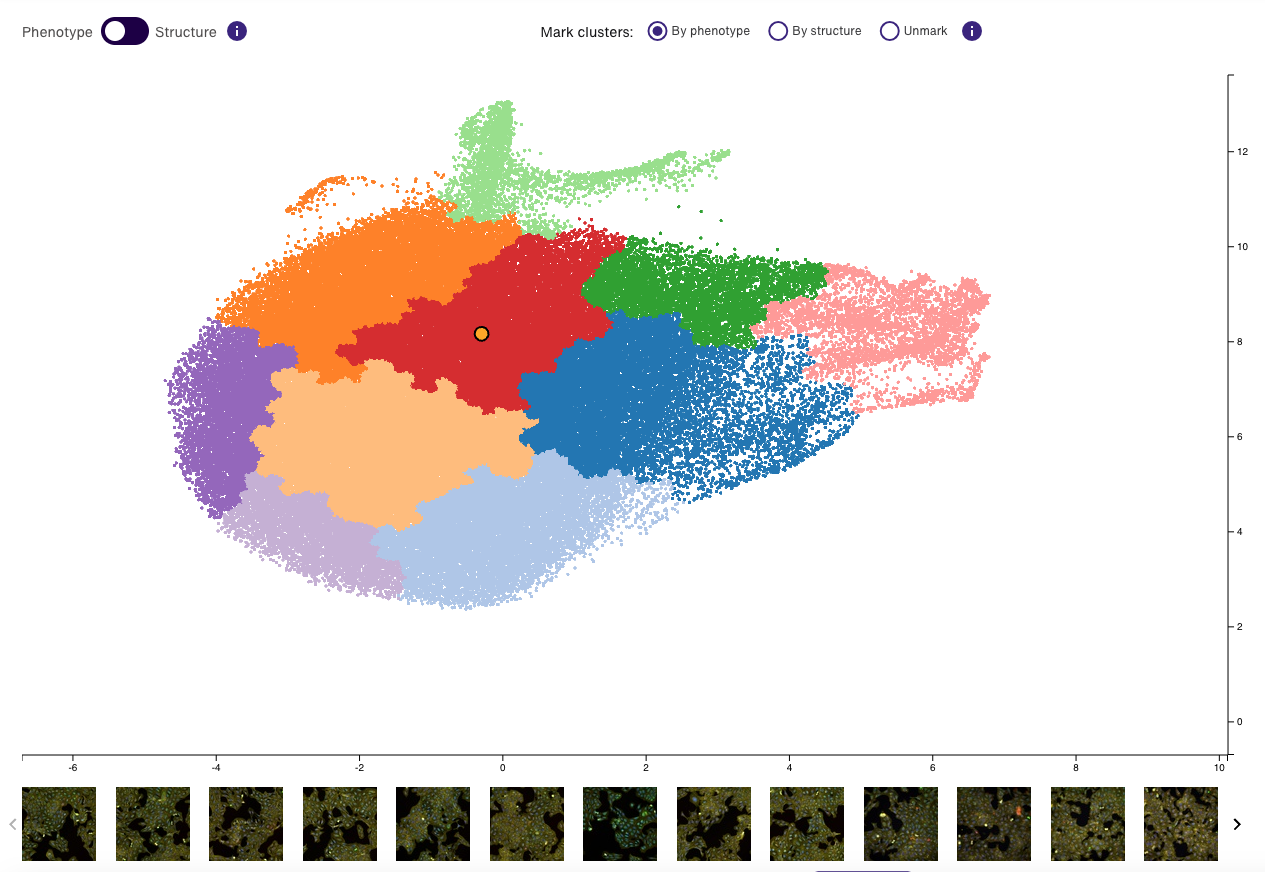JUMP-CP
Data Explorer
Explore the rich compound representation space of the dataset curated by the JUMP-Cell Painting Consortium with our intuitive JUMP-CP Data Explorer. Seamlessly integrated into the Ardigen phenAID technology platform, it empowers you to delve deeper into your phenotypic data.
Unlock groundbreaking advancements in drug discovery with the JUMP-CP Data Explorer
Powered by a collaboration between esteemed organizations like the Broad Institute of MIT and Harvard, and leading pharmaceutical partners, this consortium is revolutionizing the landscape of scientific research by pooling resources to generate and share invaluable Cell Painting data.
Ardigen phenAID is a supporting partner of the JUMP-CP Consortium
The JUMP-CP Consortium's aim is to validate and scale up image-based drug discovery strategies by creating the world's largest public cell imaging dataset, corresponding to both genetic and chemical perturbations. Its members include 10 leading pharmaceutical companies (Amgen, AstraZeneca, Bayer, Biogen, Eisai, Janssen Pharmaceutica NV, Merck KGaA, Pfizer, Servier, and Takeda) and two non-profit research organizations, including the Broad Institute of MIT and Harvard and Ksilink. We are providing deep learning expertise to the consortium, leveraging a web application to facilitate the exploration of the JUMP-CP Cell Painting dataset.
What is Cell Painting?
Cell Painting is not just microscopy—it's a cutting-edge assay capable of unearthing nuanced variations in cell images linked to diseases, genetic alterations, or drug impacts. Dive into our vast database comprising over 140,000 samples, including a staggering array of 117,000 compounds, 13,000 overexpressed genes, and 8,000 genes manipulated via CRISPR-Cas9.
But we're not just about data—we're about insights. Our platform offers dual representations: structural and phenotypic. Toggle effortlessly between the two to delve deeper into the intricacies of chemical and genetic perturbations. Our Structural representation, driven by the Extended-Connectivity Fingerprint (ECFP) technique, unveils the molecular architecture of compounds with unparalleled clarity. Meanwhile, our Phenotypic representation harnesses CellProfiler features, providing a holistic view of biological responses.

Ready to explore further?
Our predictive power grows with each new label, and your contribution could propel us even further. Join us in expanding our database and shaping the future of drug discovery.

